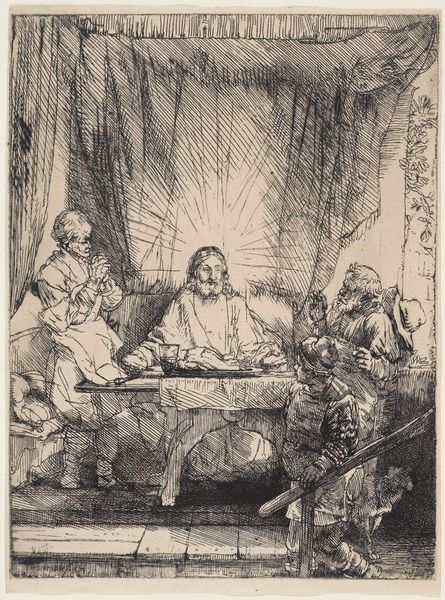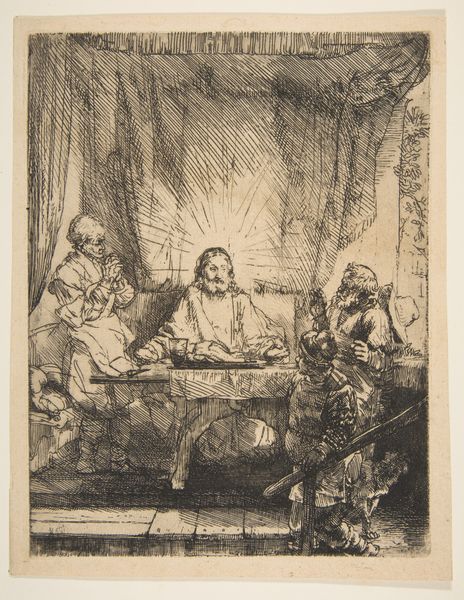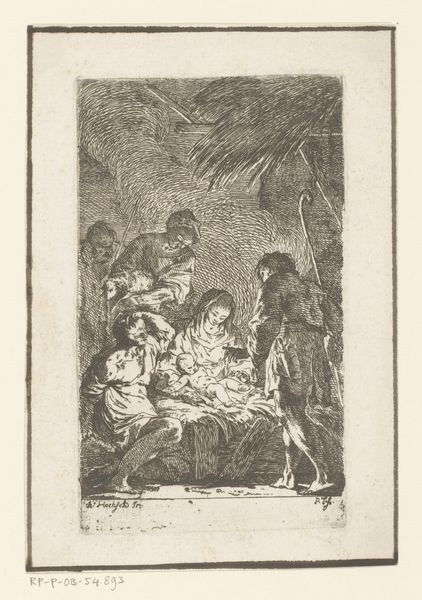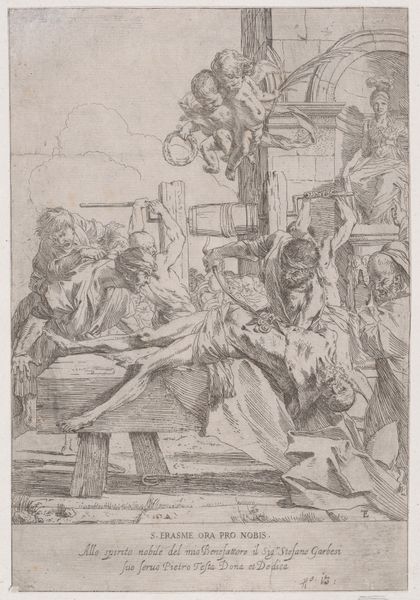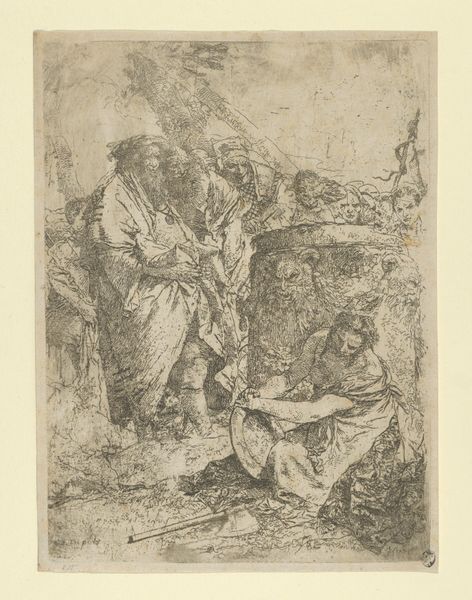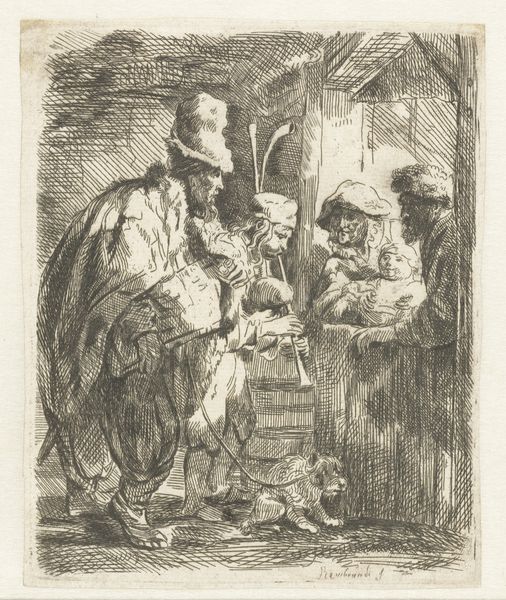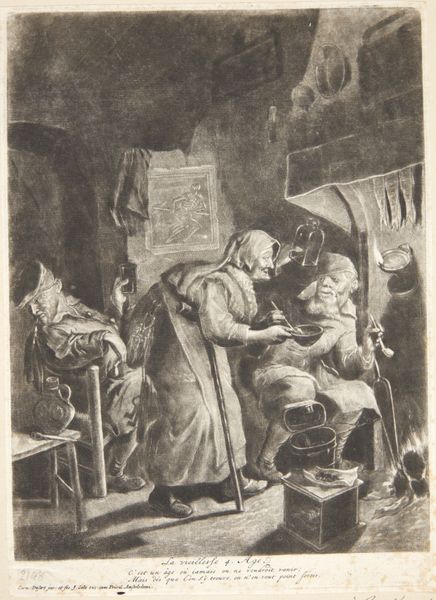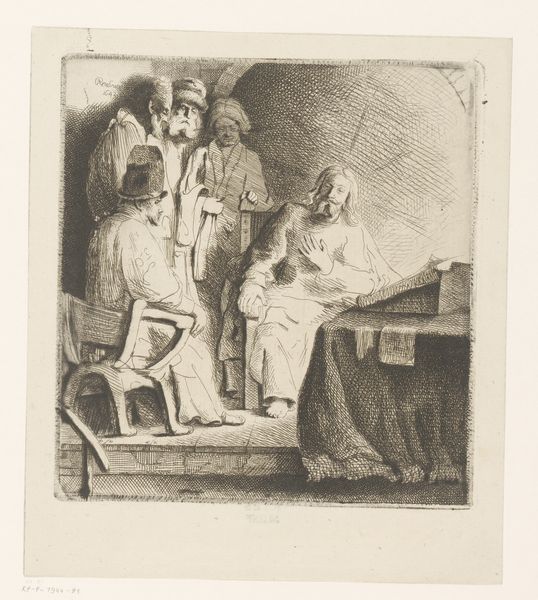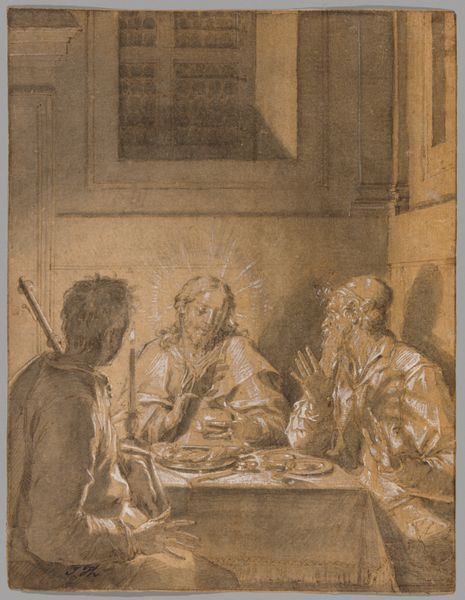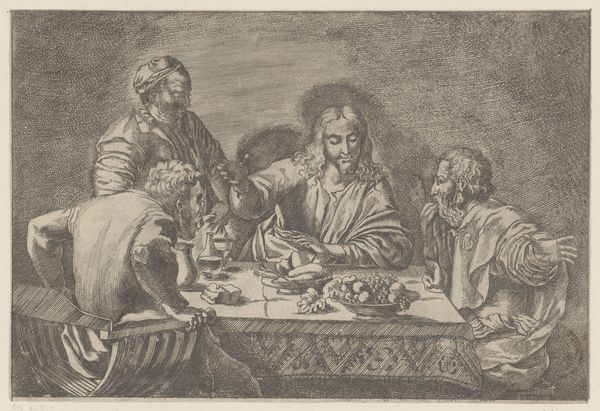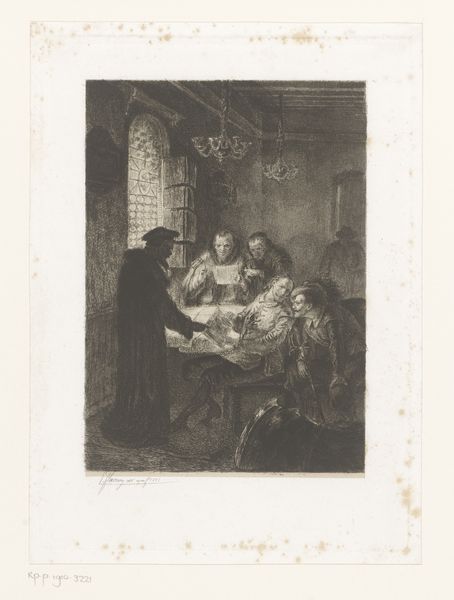
drawing, print, etching, paper, ink
#
drawing
#
baroque
# print
#
etching
#
paper
#
ink
#
pencil drawing
#
history-painting
Dimensions: 212 × 160 mm (image/sheet, cut within platemark)
Copyright: Public Domain
Rembrandt van Rijn created this etching, "Christ at Emmaus: The Larger Plate," in the Netherlands, during the Dutch Golden Age, a period of immense economic and cultural growth. The scene depicts the biblical story of Christ revealing himself to two disciples after his resurrection. But Rembrandt wasn't simply illustrating scripture, he was engaging with contemporary debates about faith and representation. The stark contrast between light and shadow, typical of Rembrandt's style, isn't just aesthetic. It's a visual metaphor for revelation, the sudden unveiling of truth. Consider the setting: a humble interior, not a grand cathedral. Rembrandt often placed biblical scenes in everyday environments, blurring the lines between the sacred and the secular, reflecting a society grappling with religious identity after the Protestant Reformation. Art historians delve into such cultural contexts, examining everything from religious texts to economic records, to truly understand the power and meaning of works like this.
Comments
No comments
Be the first to comment and join the conversation on the ultimate creative platform.
